Tengwang Pavilion is located along the Yanjiang Road in Donghu District, Nanchang City, Jiangxi Province. It stands on the east bank of the Ganjiang River and at the intersection of the old courses of the Ganjiang River and the Fuhe River. It is not only a landmark building in Nanchang City but also a symbol of the ancient civilization of Yuzhang. Since its initial construction in the fourth year of Yonghui in the Tang Dynasty (653), Tengwang Pavilion has endured the vicissitudes of time and witnessed countless historical changes.
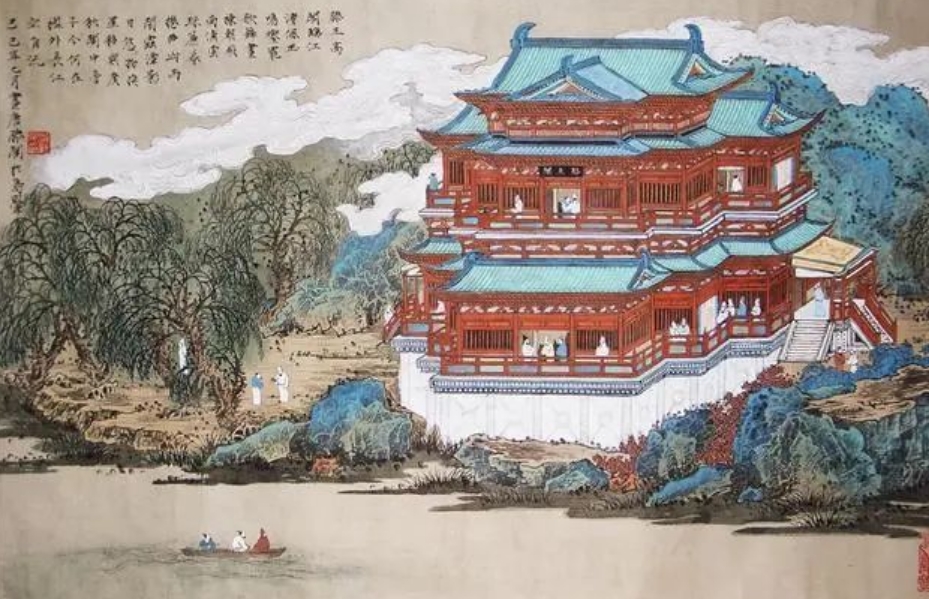
01 Historical Evolution
In the fourth year of Yonghui in the Tang Dynasty, Li Yuanying, the Prince of Teng, built Tengwang Pavilion when he served as the governor of Hongzhou in the south of the Yangtze River.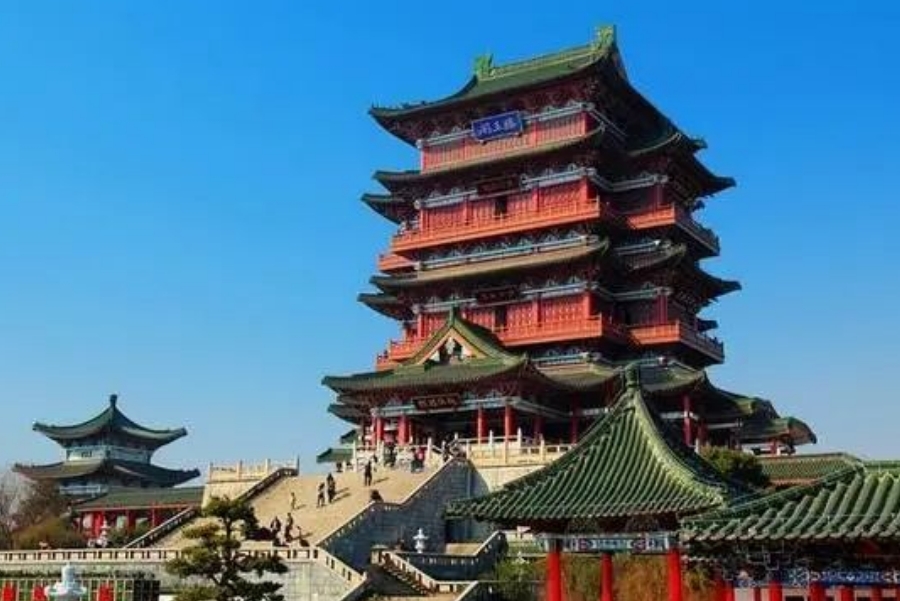
In the second year of Shangyuan in the Tang Dynasty (675), Yan Boyu, the governor of Hongzhou, rebuilt Tengwang Pavilion. Wang Bo wrote “Preface to Farewell on Ascending Tengwang Pavilion in Hongzhou in Autumn”, making Tengwang Pavilion famous far and wide.
Since then, Tengwang Pavilion has experienced repeated rises and falls and has been rebuilt many times. In the Song, Yuan, Ming and Qing dynasties, there were reconstruction efforts for Tengwang Pavilion.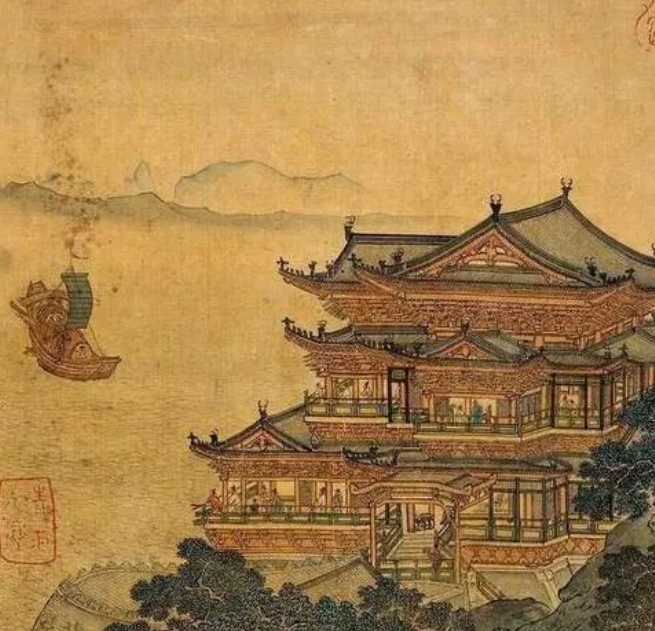
On October 1, 1983, the foundation-laying ceremony for the reconstruction project of Tengwang Pavilion was held. On October 22, 1985, the reconstruction project officially started. On October 8, 1989, the reconstructed Tengwang Pavilion was officially completed and opened to the public.
In the fourth year of Yonghui in the Tang Dynasty, Li Yuanying, the Prince of Teng, built Tengwang Pavilion when he served as the governor of Hongzhou in the south of the Yangtze River.

In the second year of Shangyuan in the Tang Dynasty (675), Yan Boyu, the governor of Hongzhou, rebuilt Tengwang Pavilion. Wang Bo wrote “Preface to Farewell on Ascending Tengwang Pavilion in Hongzhou in Autumn”, making Tengwang Pavilion famous far and wide.
Since then, Tengwang Pavilion has experienced repeated rises and falls and has been rebuilt many times. In the Song, Yuan, Ming and Qing dynasties, there were reconstruction efforts for Tengwang Pavilion.

On October 1, 1983, the foundation-laying ceremony for the reconstruction project of Tengwang Pavilion was held. On October 22, 1985, the reconstruction project officially started. On October 8, 1989, the reconstructed Tengwang Pavilion was officially completed and opened to the public.
02 Architectural Layout
(I) Overall Appearance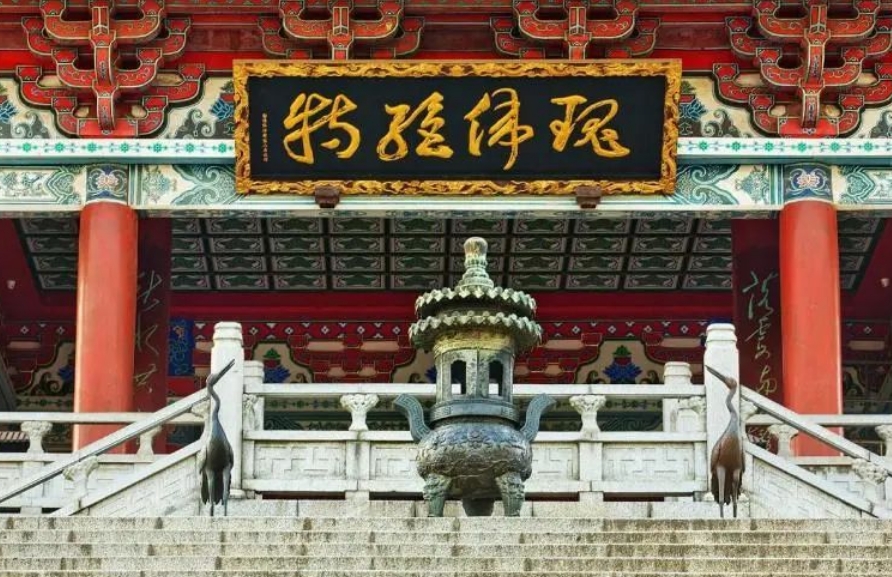
The main building of Tengwang Pavilion is 57.5 meters high with a construction area of 13,000 square meters. The lower part is a 12-meter-high platform base symbolizing the ancient city wall, divided into two levels.
(I) Overall Appearance

The main building of Tengwang Pavilion is 57.5 meters high with a construction area of 13,000 square meters. The lower part is a 12-meter-high platform base symbolizing the ancient city wall, divided into two levels.
The main pavilion above the platform is in the format of “three visible floors and seven hidden floors” and is a three-story Song-style building with corridors. There are a total of seven floors inside, divided into three visible floors, three hidden floors and an attic.The ridge kiss on the main ridge is a special imitation of the Song Dynasty, 3.5 meters high. The eave tiles and dripping tiles are all specially made.The eave tile has the four characters “Autumn Wind of Tengwang Pavilion”, and the dripping tile has the pattern of “Lonely Wild Duck”. Below the platform, there are two gourd-shaped artificial lakes that connect north and south.Above the North Lake, there is a zigzag wind and rain bridge.
(II) Internal Structure
Main Pavilion
The colored paintings on the beams and fangs of the main pavilion adopt the “Nianyu Decoration” in the Song-style colored paintings as the main tone, supplemented by “All-colored Decoration” and “Jie Lüe Jie Hua Decoration”. For all the beams and fangs in the interior and exterior of each main room, “Nianyu Decoration” is used, and “All-colored Decoration” is used for each secondary room.
First Floor
Under the eaves of the first floor of Tengwang Pavilion, there are four horizontal plaques. To the east is the Nine-Dragon Plaque of “Magnificent, Extraordinary and Unique”, and the content is selected from Han Yu’s “Record of the Newly Repaired Tengwang Pavilion”. To the west is the huge plaque of “Overhanging with No Ground Below”. Under the high and low corridor eaves in the south and north are the plaques of “Facing the River” and “Belt Lake” respectively. Inside the first floor, there is a white marble relief “When the Wind Sends Tengwang Pavilion” created according to the story in the famous work “The Divine Wind of Madang Sends Tengwang Pavilion” in “Stories to Awaken the World” written by Feng Menglong in the Ming Dynasty. In the middle of the west beam and fang, there is a gold plaque of “The First Tower in the West of the Ganjiang River” written by Comrade Bai Dongcai.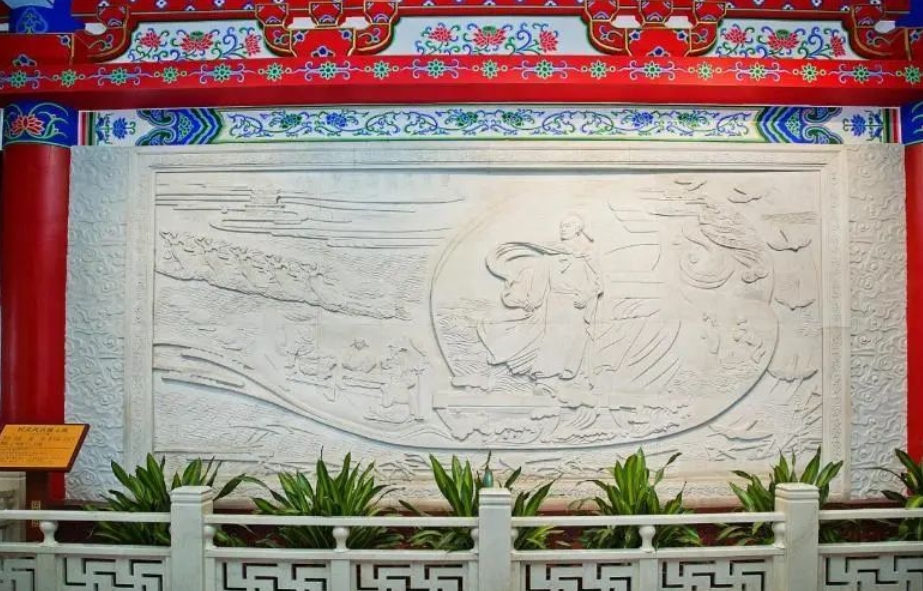
Second Floor
On the wall of the main hall on the second floor is a large acrylic mural “Picture of Outstanding Figures”, which is 2.55 meters high and more than 20 meters long.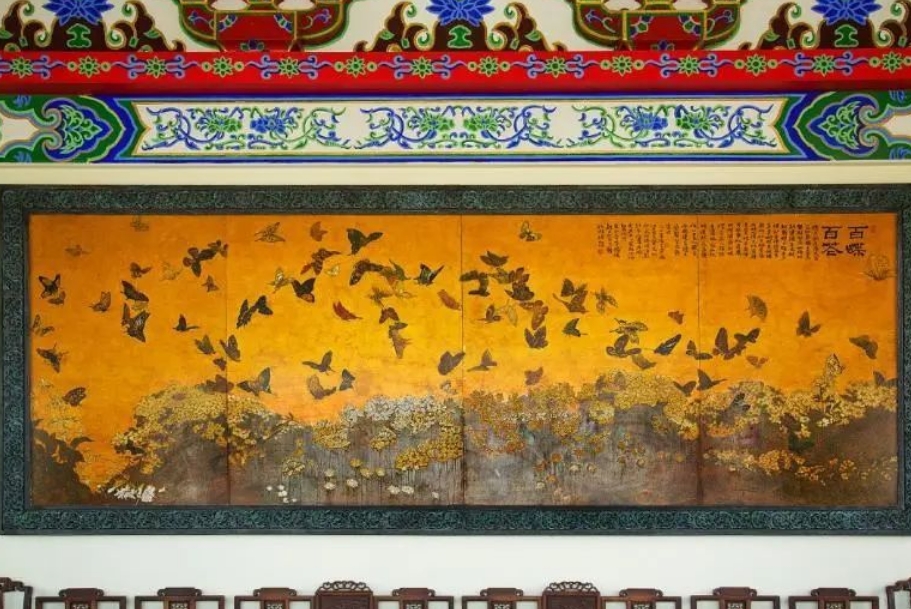
Third Floor
The third floor is a visible floor surrounded by corridors, and it is also an important level in the pavilion. On the screen wall in the middle hall, there is an acrylic mural “Dream in Linchuan”, which is based on the story of Tang Xianzu rehearsing “The Peony Pavilion” in Tengwang Pavilion.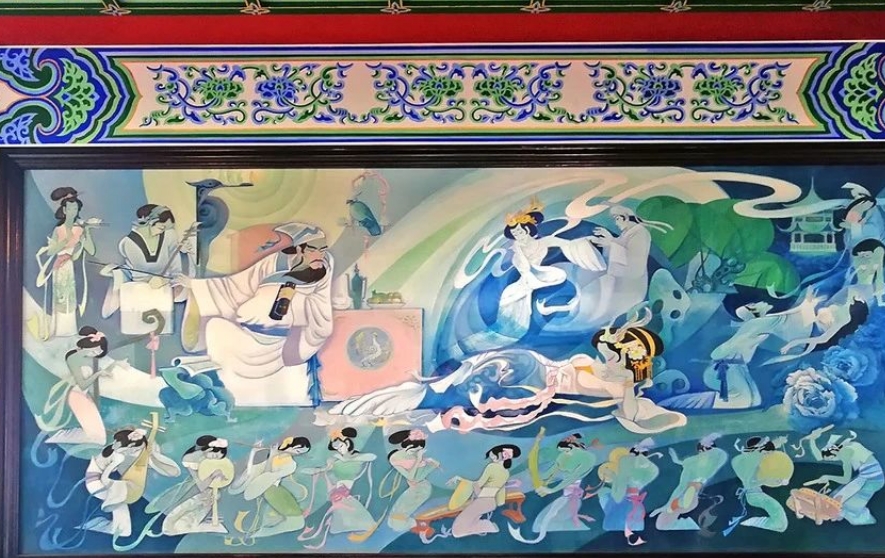
Fourth Floor
The fourth floor mainly reflects the theme of “Spiritual Land”. On the wall of the main hall, there is an acrylic mural “Picture of Spiritual Land”.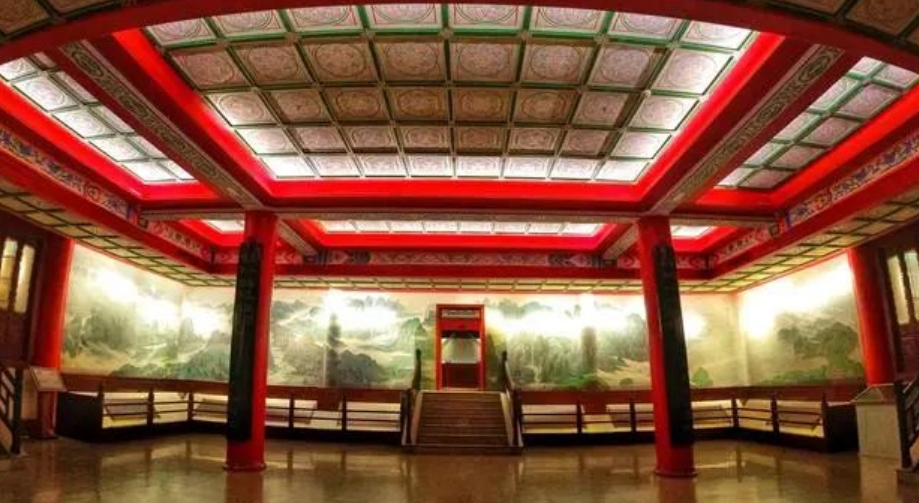
Fifth Floor
The fifth floor is a visible floor surrounded by corridors. Under the four gold plaques under the eaves, the content is from “Preface to Tengwang Pavilion”.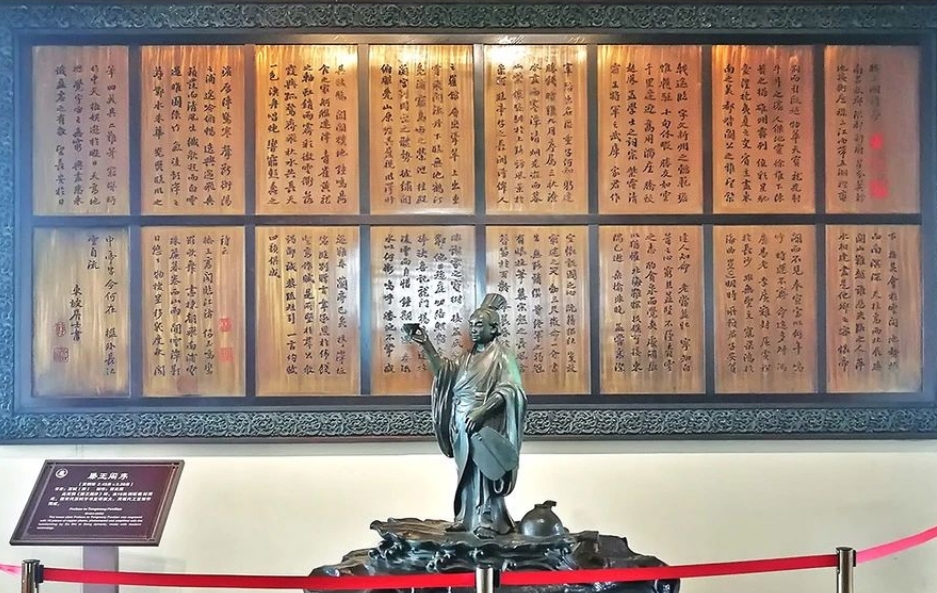
Sixth Floor
The sixth floor is the highest sightseeing floor of Tengwang Pavilion. Between the double eaves in the east and west, there are two gold plaques of “Tengwang Pavilion” handwritten by Su Dongpo hanging high.
Main Pavilion
The colored paintings on the beams and fangs of the main pavilion adopt the “Nianyu Decoration” in the Song-style colored paintings as the main tone, supplemented by “All-colored Decoration” and “Jie Lüe Jie Hua Decoration”. For all the beams and fangs in the interior and exterior of each main room, “Nianyu Decoration” is used, and “All-colored Decoration” is used for each secondary room.
First Floor
Under the eaves of the first floor of Tengwang Pavilion, there are four horizontal plaques. To the east is the Nine-Dragon Plaque of “Magnificent, Extraordinary and Unique”, and the content is selected from Han Yu’s “Record of the Newly Repaired Tengwang Pavilion”. To the west is the huge plaque of “Overhanging with No Ground Below”. Under the high and low corridor eaves in the south and north are the plaques of “Facing the River” and “Belt Lake” respectively. Inside the first floor, there is a white marble relief “When the Wind Sends Tengwang Pavilion” created according to the story in the famous work “The Divine Wind of Madang Sends Tengwang Pavilion” in “Stories to Awaken the World” written by Feng Menglong in the Ming Dynasty. In the middle of the west beam and fang, there is a gold plaque of “The First Tower in the West of the Ganjiang River” written by Comrade Bai Dongcai.

Second Floor
On the wall of the main hall on the second floor is a large acrylic mural “Picture of Outstanding Figures”, which is 2.55 meters high and more than 20 meters long.

Third Floor
The third floor is a visible floor surrounded by corridors, and it is also an important level in the pavilion. On the screen wall in the middle hall, there is an acrylic mural “Dream in Linchuan”, which is based on the story of Tang Xianzu rehearsing “The Peony Pavilion” in Tengwang Pavilion.

Fourth Floor
The fourth floor mainly reflects the theme of “Spiritual Land”. On the wall of the main hall, there is an acrylic mural “Picture of Spiritual Land”.

Fifth Floor
The fifth floor is a visible floor surrounded by corridors. Under the four gold plaques under the eaves, the content is from “Preface to Tengwang Pavilion”.

Sixth Floor
The sixth floor is the highest sightseeing floor of Tengwang Pavilion. Between the double eaves in the east and west, there are two gold plaques of “Tengwang Pavilion” handwritten by Su Dongpo hanging high.
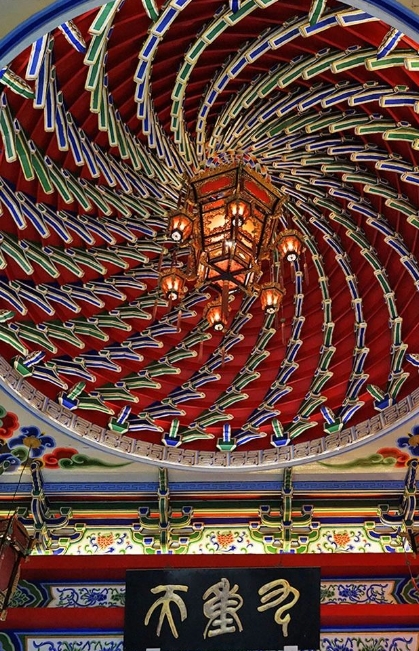
03 Architectural Features
Tengwang Pavilion is unique in space organization, layout and expansion. It cleverly solves a series of problems such as sound, shadow, light and color, creating a special artistic conception and fully demonstrating the characteristics of Chinese classical architectural aesthetics. From the perspective of plane layout, the Tengwang Pavilion complex forms an orderly arrangement of pavilions, corridors and pavilions, bringing aesthetic feeling to tourists like the rhythm of music.
Tengwang Pavilion is unique in space organization, layout and expansion. It cleverly solves a series of problems such as sound, shadow, light and color, creating a special artistic conception and fully demonstrating the characteristics of Chinese classical architectural aesthetics. From the perspective of plane layout, the Tengwang Pavilion complex forms an orderly arrangement of pavilions, corridors and pavilions, bringing aesthetic feeling to tourists like the rhythm of music.
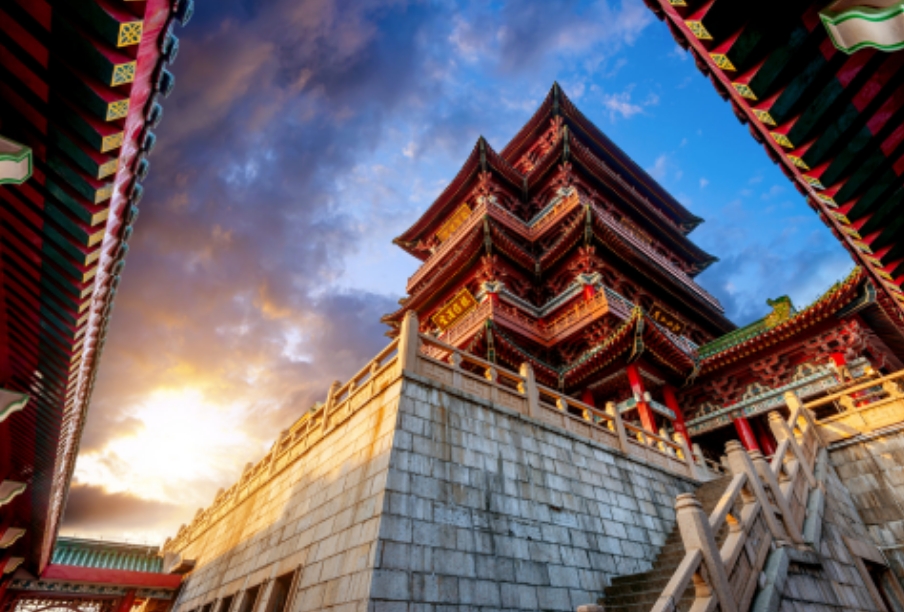
04 History and Culture
(I) Related Poems and Essays
Wang Bo’s “Preface to Tengwang Pavilion” is the most famous poem and essay related to Tengwang Pavilion. The famous line “The setting sun and the lone wild duck fly together, and the autumn waters merge with the sky in one color” has been passed down through the ages.
(I) Related Poems and Essays
Wang Bo’s “Preface to Tengwang Pavilion” is the most famous poem and essay related to Tengwang Pavilion. The famous line “The setting sun and the lone wild duck fly together, and the autumn waters merge with the sky in one color” has been passed down through the ages.
(II) Related Figures
Wang Bo has a deep connection with Tengwang Pavilion. His “Preface to Tengwang Pavilion” made Tengwang Pavilion famous all over the world.
Wang Bo has a deep connection with Tengwang Pavilion. His “Preface to Tengwang Pavilion” made Tengwang Pavilion famous all over the world.
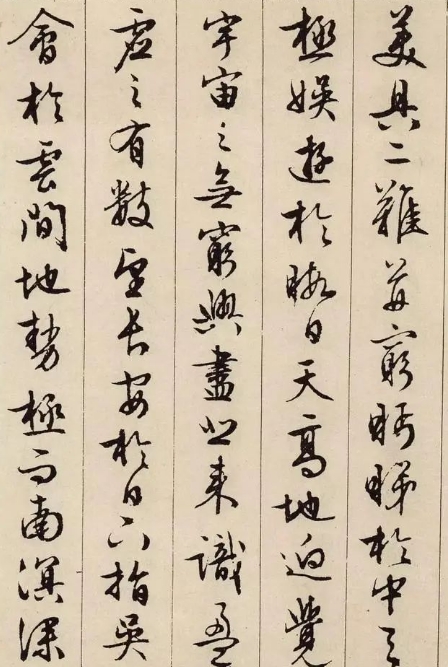
(III) Customs and Culture
In ancient times, Tengwang Pavilion was regarded as an auspicious feng shui building. An ancient ballad goes, “When the vine is broken and the gourd is cut, the pagoda collapses and Yuzhang is incomplete.” In ancient Chinese customs, as the tallest landmark building in the local area, Tengwang Pavilion was believed to be able to gather the spiritual energy of heaven and earth and absorb the essence of the sun and the moon. In addition, Tengwang Pavilion was also a place to store classics and history books in ancient times. Feudal scholars and officials also often greeted, sent off and entertained guests here.
In ancient times, Tengwang Pavilion was regarded as an auspicious feng shui building. An ancient ballad goes, “When the vine is broken and the gourd is cut, the pagoda collapses and Yuzhang is incomplete.” In ancient Chinese customs, as the tallest landmark building in the local area, Tengwang Pavilion was believed to be able to gather the spiritual energy of heaven and earth and absorb the essence of the sun and the moon. In addition, Tengwang Pavilion was also a place to store classics and history books in ancient times. Feudal scholars and officials also often greeted, sent off and entertained guests here.
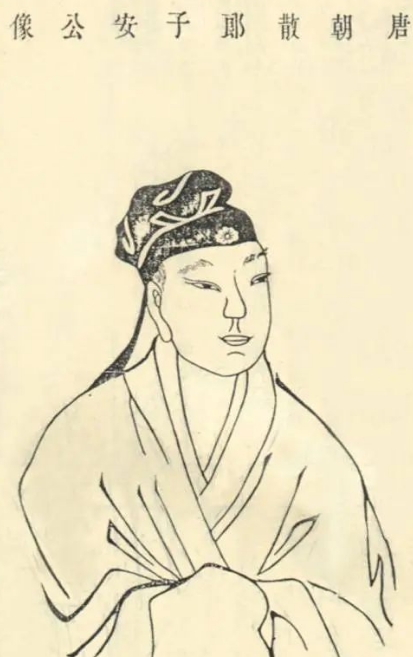
05 Visiting Information
(I) Opening Hours
It is open from 08:00 to 22:00 all year round. The scenic area has admission sessions. Please check in within the selected admission time period.
(I) Opening Hours
It is open from 08:00 to 22:00 all year round. The scenic area has admission sessions. Please check in within the selected admission time period.
(II) Transportation Routes
Bus Routes: In Nanchang City, you can take Nanchang Bus No. 25, Nanchang Bus No. 26, Nanchang Bus No. 38, Nanchang Bus No. 39, Nanchang Bus No. 52, Nanchang Bus No. 170 and get off at Tengwang Pavilion Station to arrive.
Subway: Exit 2 of Tengwang Pavilion Station on Nanchang Metro Line 1 (to Renjie Square at the southwest gate of the scenic area) or Exit 3 of Wanshougong Station and walk to the main entrance of Tengwang Pavilion scenic area.
Bus Routes: In Nanchang City, you can take Nanchang Bus No. 25, Nanchang Bus No. 26, Nanchang Bus No. 38, Nanchang Bus No. 39, Nanchang Bus No. 52, Nanchang Bus No. 170 and get off at Tengwang Pavilion Station to arrive.
Subway: Exit 2 of Tengwang Pavilion Station on Nanchang Metro Line 1 (to Renjie Square at the southwest gate of the scenic area) or Exit 3 of Wanshougong Station and walk to the main entrance of Tengwang Pavilion scenic area.
(III) Free Ticket Activity
Recitation Passage: “Preface to Tengwang Pavilion“
Activity Time: From May 1 to December 31, 2024
Recitation Location: On the second floor of the film and television screening hall in the tourist center at the south gate of Tengwang Pavilion tourist area
Participation Method: Recite the full text of “Preface to Tengwang Pavilion” within 6 minutes and you can get a free ticket.
Recitation Passage: “Preface to Tengwang Pavilion“
Activity Time: From May 1 to December 31, 2024
Recitation Location: On the second floor of the film and television screening hall in the tourist center at the south gate of Tengwang Pavilion tourist area
Participation Method: Recite the full text of “Preface to Tengwang Pavilion” within 6 minutes and you can get a free ticket.
(IV) Preferential Policies
Children: Under 1.4 meters (excluding) in height, free.
The Elderly: Aged 65 years old (including) and above with the senior citizen card or ID card, free.
Students: Full-time undergraduate and below students (excluding adult education students and graduate students) with their valid student ID cards or student cards, half price.
Disabled Persons: With the disability certificate, free.
Active Servicemen: With valid certificates such as officer certificates, free.
Local Citizens of Nanchang: Local citizens of Nanchang with their ID cards, half price.
Retired Servicemen: With their own preferential treatment certificates for retired servicemen, free.
Supplementary Explanation: This preferential policy only applies to the Tengwang Pavilion scenic area and does not include the scenic area of “Dreaming of Tengwang Pavilion” (night show) and the scenic area of Tengwang Pavilion Cruise. For the preferential policies of these two scenic spots, please search for their scenic spots (such as “Dreaming of Tengwang Pavilion”) to view.
Children: Under 1.4 meters (excluding) in height, free.
The Elderly: Aged 65 years old (including) and above with the senior citizen card or ID card, free.
Students: Full-time undergraduate and below students (excluding adult education students and graduate students) with their valid student ID cards or student cards, half price.
Disabled Persons: With the disability certificate, free.
Active Servicemen: With valid certificates such as officer certificates, free.
Local Citizens of Nanchang: Local citizens of Nanchang with their ID cards, half price.
Retired Servicemen: With their own preferential treatment certificates for retired servicemen, free.
Supplementary Explanation: This preferential policy only applies to the Tengwang Pavilion scenic area and does not include the scenic area of “Dreaming of Tengwang Pavilion” (night show) and the scenic area of Tengwang Pavilion Cruise. For the preferential policies of these two scenic spots, please search for their scenic spots (such as “Dreaming of Tengwang Pavilion”) to view.
(V) Service Facilities
Parking Lot: [Tengwang Pavilion Parking Lot] Reference price: For the first hour, it is 4 yuan for small vehicles and 12 yuan for large and medium-sized buses; from the second to the fifth hour, small vehicles will be charged an additional 1.5 yuan per hour and large and medium-sized buses will be charged an additional 4.5 yuan per hour; Address: No. 58, Antique Street, Donghu District, Nanchang City; Capacity: 25; Parking is free if it does not exceed 15 minutes (including).
Mobile Phone Charging: Tengwang Pavilion tourist area tourist center can provide mobile phone charging services.
Scenic Area Interpretation: The guide fee for scenic area interpretation: 100 yuan for 1 – 5 people, 120 yuan for 5 – 10 people, 130 yuan for 10 – 15 people.
Scenic Area Map: Tourists can get the introduction materials of the scenic area at the tourist center of Tengwang Pavilion tourist area and the tourist service point at the east gate. They are mainly placed in the tourist lounge, including brochures, tourist maps, promotional CDs, etc.
Rain Gear Rental: Reference price: Subject to on-site charges; Address: Tourist center.
Wheelchair Rental: Reference price: Subject to on-site charges; Address: Tourist service center.
Toilets: There are a total of six toilets in the scenic area. There are two in the tourist center of Tengwang Pavilion tourist area. There is one at the exit of the northeast gate in the north. In the North Garden, there are Dongjingxuan and Guànxǐxuan. There is one in the ecological parking lot at the south gate.
Souvenir Shop: The tourist center of Tengwang Pavilion tourist area can provide souvenirs.
Parking Lot: [Tengwang Pavilion Parking Lot] Reference price: For the first hour, it is 4 yuan for small vehicles and 12 yuan for large and medium-sized buses; from the second to the fifth hour, small vehicles will be charged an additional 1.5 yuan per hour and large and medium-sized buses will be charged an additional 4.5 yuan per hour; Address: No. 58, Antique Street, Donghu District, Nanchang City; Capacity: 25; Parking is free if it does not exceed 15 minutes (including).
Mobile Phone Charging: Tengwang Pavilion tourist area tourist center can provide mobile phone charging services.
Scenic Area Interpretation: The guide fee for scenic area interpretation: 100 yuan for 1 – 5 people, 120 yuan for 5 – 10 people, 130 yuan for 10 – 15 people.
Scenic Area Map: Tourists can get the introduction materials of the scenic area at the tourist center of Tengwang Pavilion tourist area and the tourist service point at the east gate. They are mainly placed in the tourist lounge, including brochures, tourist maps, promotional CDs, etc.
Rain Gear Rental: Reference price: Subject to on-site charges; Address: Tourist center.
Wheelchair Rental: Reference price: Subject to on-site charges; Address: Tourist service center.
Toilets: There are a total of six toilets in the scenic area. There are two in the tourist center of Tengwang Pavilion tourist area. There is one at the exit of the northeast gate in the north. In the North Garden, there are Dongjingxuan and Guànxǐxuan. There is one in the ecological parking lot at the south gate.
Souvenir Shop: The tourist center of Tengwang Pavilion tourist area can provide souvenirs.
Tengwang Pavilion stands by the Ganjiang River. Although it has been repeatedly destroyed and rebuilt, it is still an important landmark in Nanchang and a tourist destination that people yearn for. Ascending the building and looking into the distance to feel the charm of history and the heritage of culture is undoubtedly an unforgettable experience. Come to Tengwang Pavilion quickly and start a wonderful cultural journey!